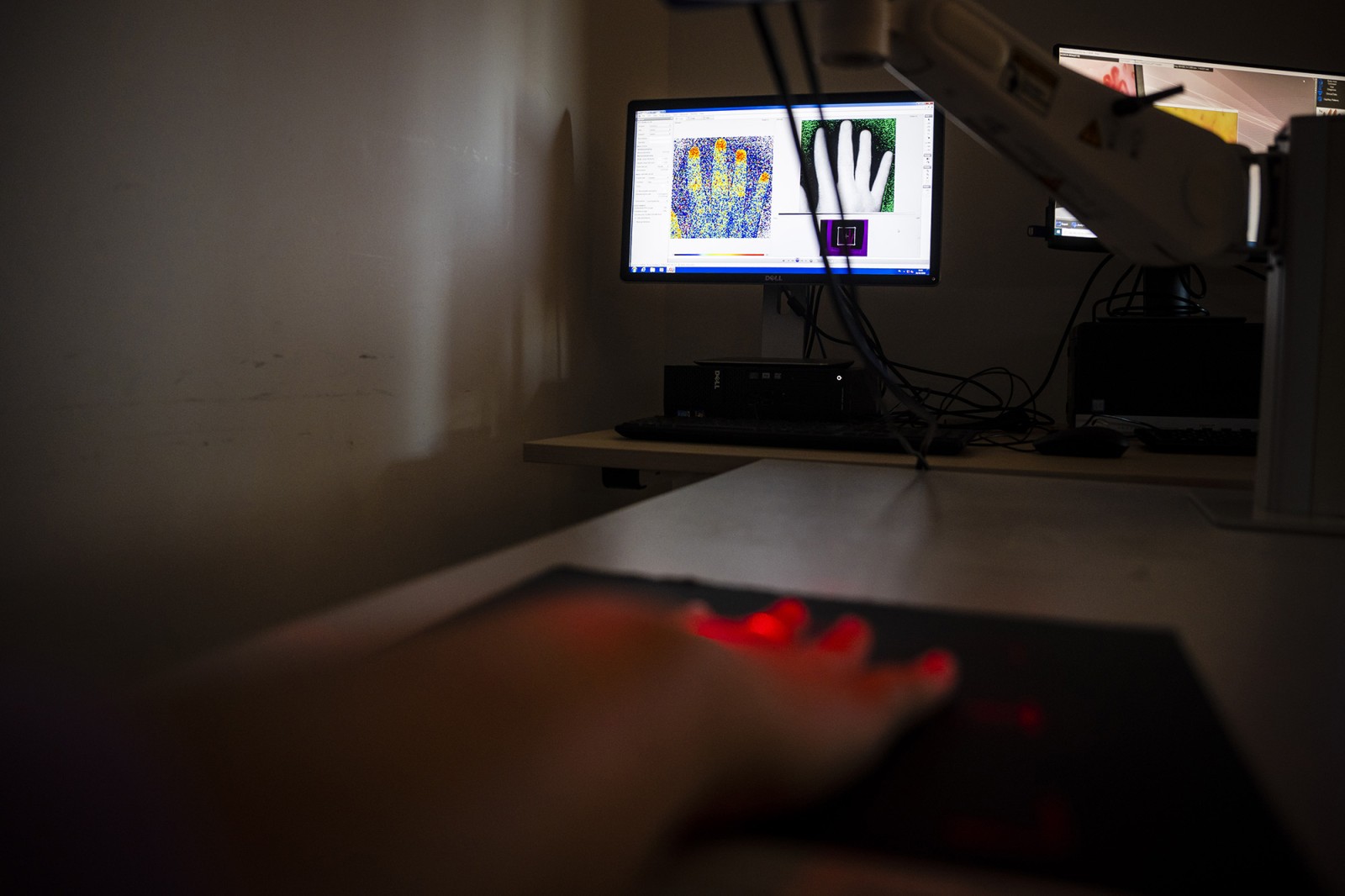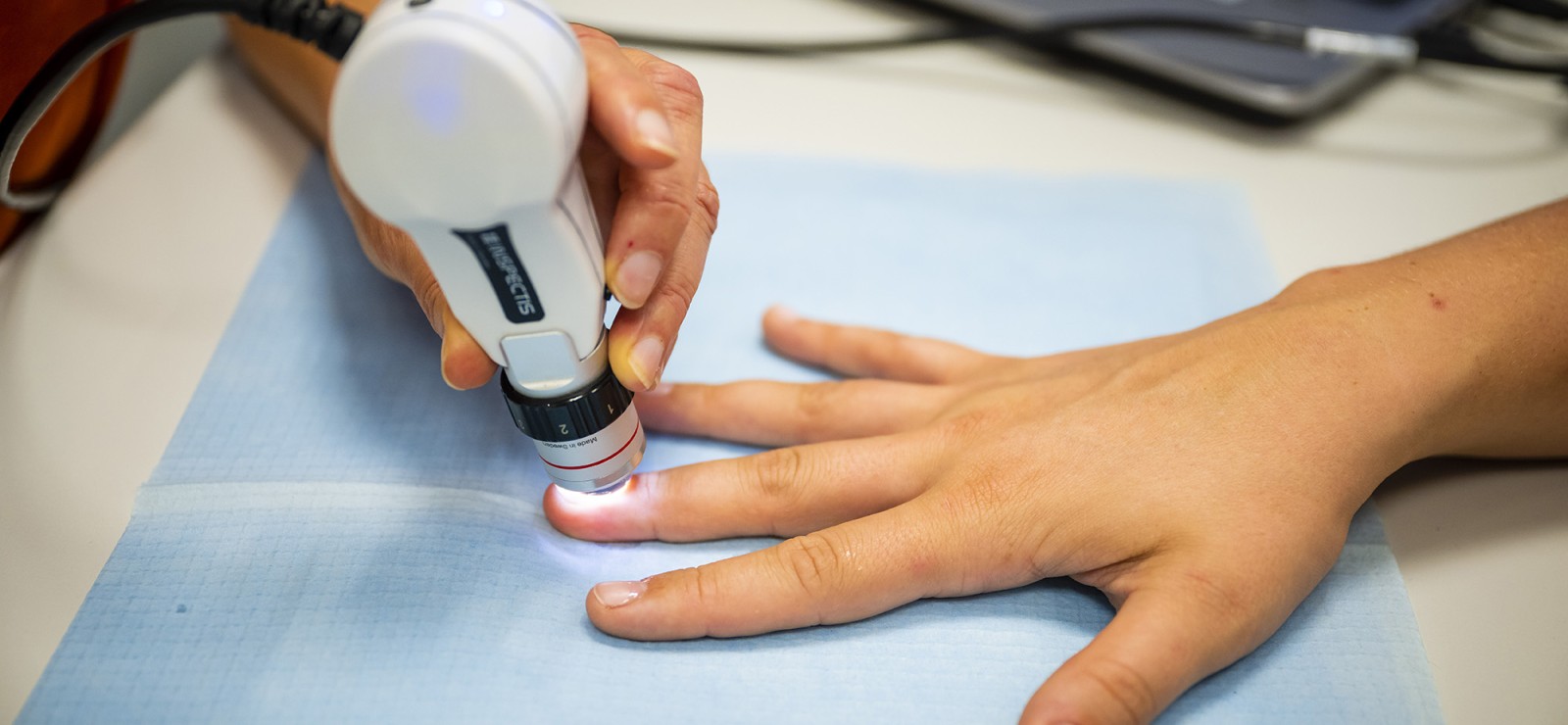Around one in every ten people suffers from fingers that turn completely white when exposed to cold weather. With some, it’s just the fingertips that are affected, whilst with others, only certain fingers. Once they are back inside again, where it’s warm, the change in skin colour gives way to extreme itchiness. This condition is known as Raynaud’s phenomenon, and thankfully, it‘s (mostly) nothing to worry about.
“I suffer from it myself, unfortunately”, admits Professor Vanessa Smith, who is Associate Professor in Rheumatology at UGent and head of the systemic sclerosis unit at Ghent University Hospital. Her mother and her daughter also have Raynaud’s phenomenon: fingers that suddenly turn white - maybe even blue or purple - in cold weather whilst the rest of the hand remains a normal colour.
Lack of blood in the fingers
But what is the reason behind the sudden change in skin colour? “When exposed to the cold, the blood vessels in the fingers constrict, blocking the blood supply and causing the fingers to turn white”, Professor Smith explains. “But as soon as you are back in a warmer environment again, blood immediately starts to flow to the fingers once more, which makes them turn red, and the affected areas start to tingle or itch. As well as being a pain (literally and figuratively), it can also be quite frightening for people, especially the first time that they experience such an attack.”
Normally, though, there is no real cause for alarm. “In most cases, there is no underlying health condition – in which case we refer to this as a primary form of Raynaud’s phenomenon, which is simply a sort of oversensitivity to cold temperatures. It can be annoying, but thankfully it is harmless.”

“I suffer from it myself, unfortunately”, admits Professor Vanessa Smith. Her mother and her daughter also have Raynaud’s phenomenon: fingers that suddenly turn white in cold weather.
Helping yourself
Why is it that some people suffer from the condition, and others don’t? “Very often it runs in the family, but people who are taking medication to reduce their blood pressure can also develop Raynaud’s phenomenon, as can those who have suffered some kind of trauma to the fingers, for example. But the type of work you do can also be a contributing factor. If you work with a handheld pneumatic drill, for instance, then you have a greater chance of developing the condition.”
Thankfully, if you do suffer from Raynaud’s phenomenon, there are steps you can take yourself in order to avoid suffering an attack. “The easiest way to do this is just to avoid being exposed to the cold. Don’t go outside in the winter wearing a t-shirt, and invest a nice thick pair of gloves.”

“When exposed to the cold, the blood vessels in the fingers constrict, blocking the blood supply and causing the fingers to turn white”, Professor Smith explains.
Underlying condition
The primary form of RP is not dangerous, but in certain rare cases, discoloured fingers when the weather is cold can be an indication of a more serious underlying condition. “In this case, we talk about a secondary form of Raynaud, which may be caused by an underlying autoimmune or rheumatological condition, such as systemic sclerosis.”
Systemic sclerosis, or scleraderma, is a rare, chronic rheumatic condition that is found in approximately 1 in every 10.000 individuals. “It can affect not only your skin but also your vital organs, which means that in some cases, it can actually be fatal”, warns Professor Smith, who continues to research the disease.
Fortunately, scleroderma is very rare and also relatively easy to detect. “Through an examination of the nailfold – a procedure also known as capillaroscopy — we can detect any abnormalities in the blood vessels. If the vessels have a comb-like structure, this means that the bloodflow is good. But if this is not the case, there is a chance that the blood vessels have been damaged due to systemic sclerosis.”
Hands in gloves
As winter approaches and the temperature starts to drop, it’s time for those who suffer from Raynaud’s phenomenon to think about getting the gloves out of the drawer again. “It doesn’t need to be freezing cold outside for fingers to be affected. Even at temperatures of between ten and fifteen degrees, it’s still advisable to wear gloves to avoid an attack of Raynauds.”
And if an ordinary pair of gloves doesn’t do the trick, then why not op for a pair of electrically heated gloves. They’ll keep your hands warm as toast, even your fingertips, and your frozen finger problem will simply melt away.
Read also
‘Women are not just copies of men with breasts and ovaries.’
Van wetenschappelijk onderzoek tot medische behandelingen, decennialang stond de man centraal in de medische wereld. Betekent dat dan ook dat vrouwen daardoor minder goede zorg krijgen?
Research into rare eye diseases at Ghent University: “It’s fair to say we rank amongst the world’s elite”
Around 8% of the world’s population suffers from a rare disease. In Belgium some 800,000 patients are affected. One of them is eighteen-month-old Oliver, who was born blind. He is closely monitored by professor Bart Leroy, whose team has made remarkable progress in the research into rare eye diseases. Still, there are quite a few stumbling blocks as well.
Are vitamin pills innocent?
For many people, a daily dose of vitamins and minerals has become part of their everyday routine. Especially in winter we ingest massive quantities of vitamin D because we think it boosts our immune system. But is that accurate and is that daily vitamin pill as innocent as it appears?
How to taper off sleeping pills safely and responsibly
In 2023, one in five Belgians was prescribed sleep medication, making Belgium the European leader. “Many people see a sleeping pill as an innocent thing,” says GP and clinical pharmacologist Ellen Van Leeuwen, “but sleeping pills are not sweets.”




